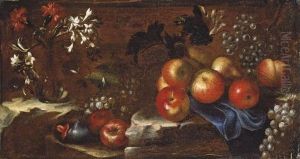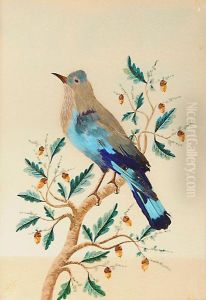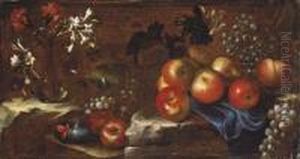Tommaso Aldrovandini Paintings
Tommaso Aldrovandini was an Italian painter of the Baroque period, born in 1653 in Bologna, Italy. He belonged to a family of artists; his father, Giuseppe Maria Aldrovandini, was also a painter, and his brother, Pompeo Aldrovandini, followed in the family's artistic footsteps. Tommaso was primarily known for his work in quadratura, a style of trompe-l'œil architectural painting that creates the illusion of three-dimensional space on flat surfaces, often ceilings or walls.
Aldrovandini trained under the guidance of his father and was influenced by the works of prominent quadratura painters of his time, such as Angelo Michele Colonna and Giovanni Battista Galli Bibiena. He worked extensively in his hometown of Bologna and in other cities such as Piacenza and Modena. His work was characterized by the use of vivid colors and the skilled incorporation of actual architectural elements with the painted illusionary ones, creating a seamless and impressive extension of the real space.
Throughout his career, Aldrovandini collaborated with various figure painters, as it was a common practice for quadratura painters to work in tandem with those who specialized in figural scenes. This collaboration between artists allowed for the creation of cohesive and dynamic compositions in which Aldrovandini's architectural illusions served as the perfect backdrop for mythological or historical narratives.
One of Aldrovandini's significant contributions was his work in the Palazzo Pepoli Campogrande in Bologna, where his frescoed ceilings are among the highlights. His other notable works include frescoes in the Palazzo Marescalchi and the Palazzo Hercolani, both in Bologna. Aldrovandini's style continued to evolve throughout his life, and he played a role in the transition of Bolognese painting from Baroque exuberance towards the more restrained and elegant Rococo style that would dominate the 18th century.
Tommaso Aldrovandini died in 1736 in Bologna, leaving behind a legacy of influential works that contributed to the development and popularity of quadratura painting in Northern Italy. His works continue to be studied for their technical mastery and their ability to enhance and transform interior spaces, capturing the imagination of viewers with the illusion of expanded reality.


